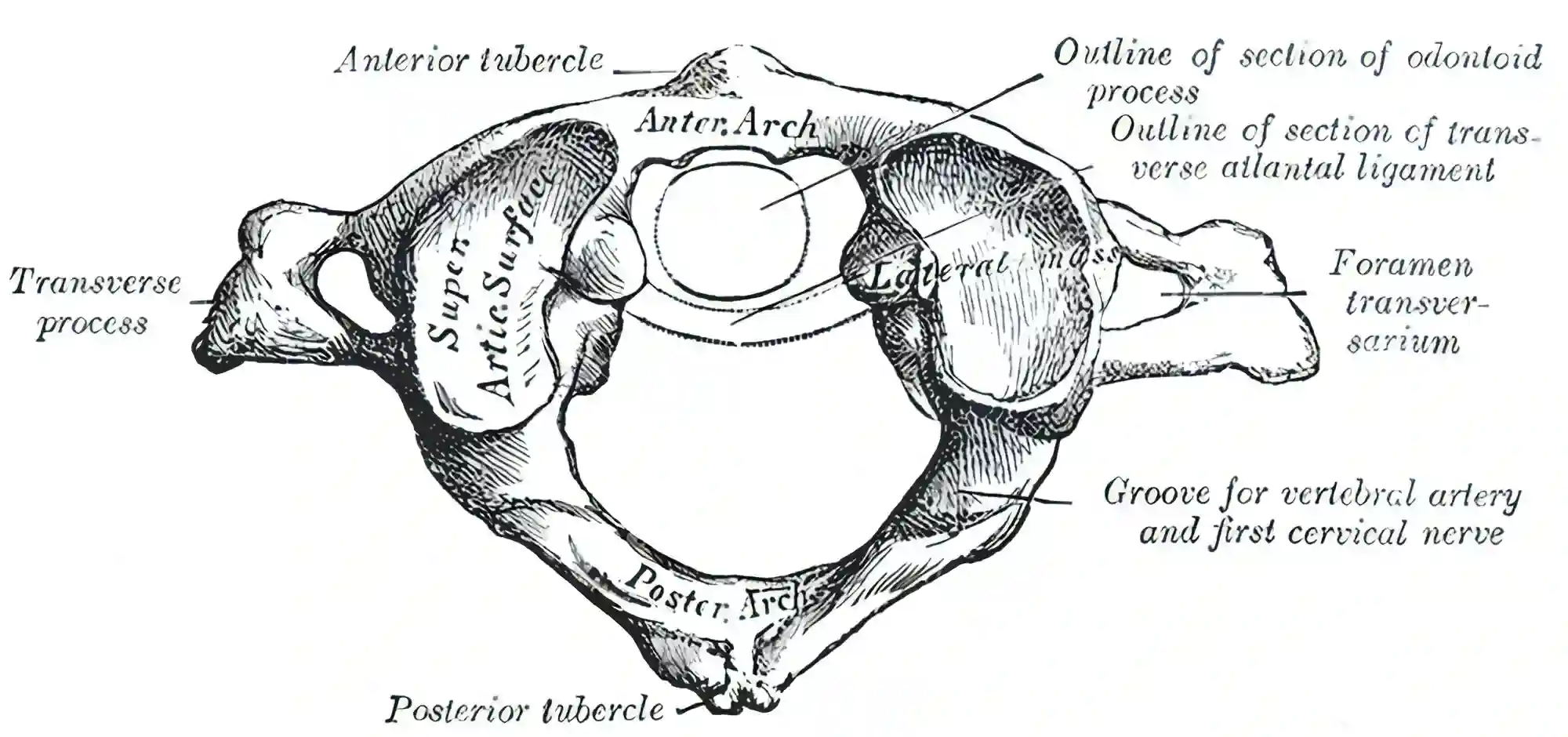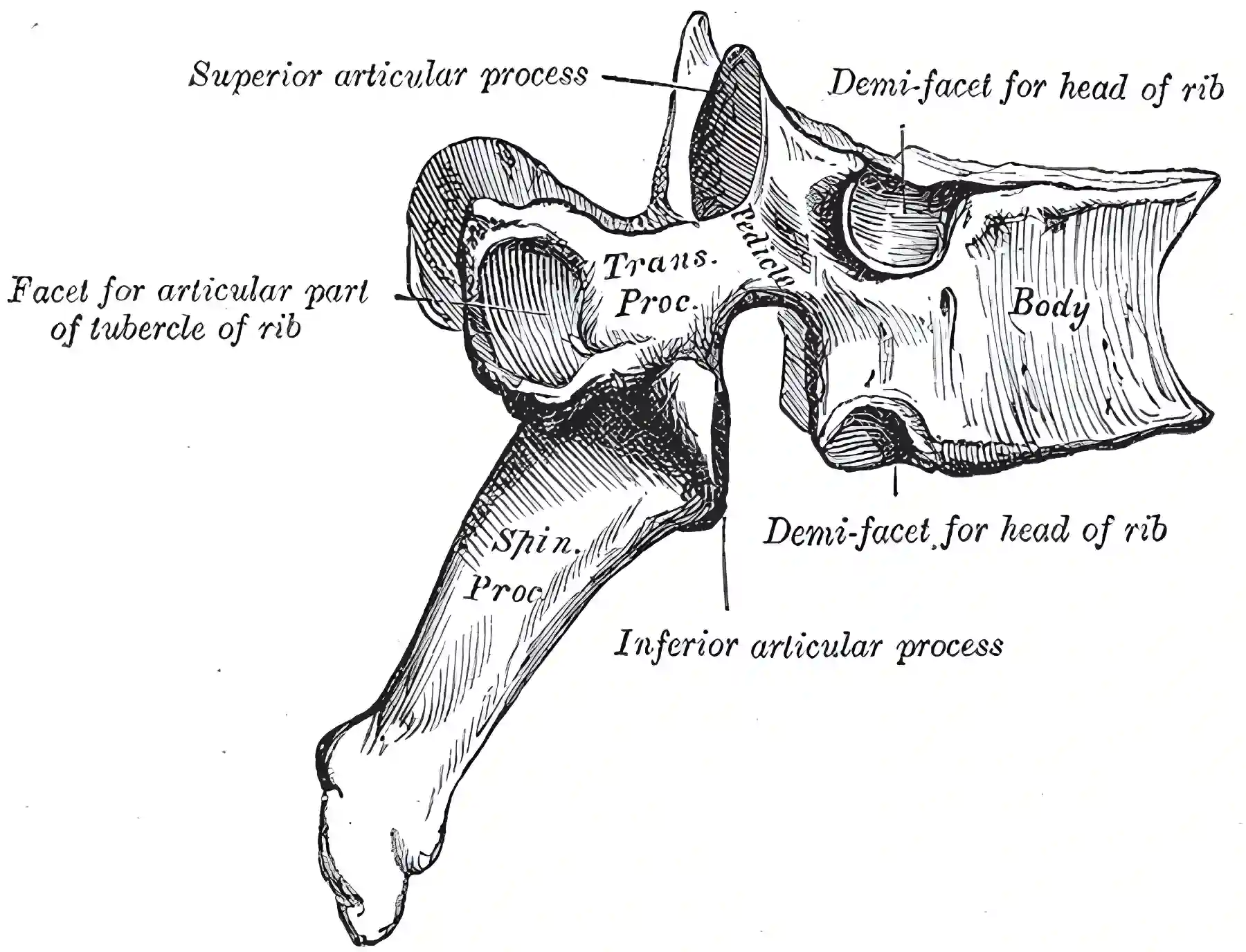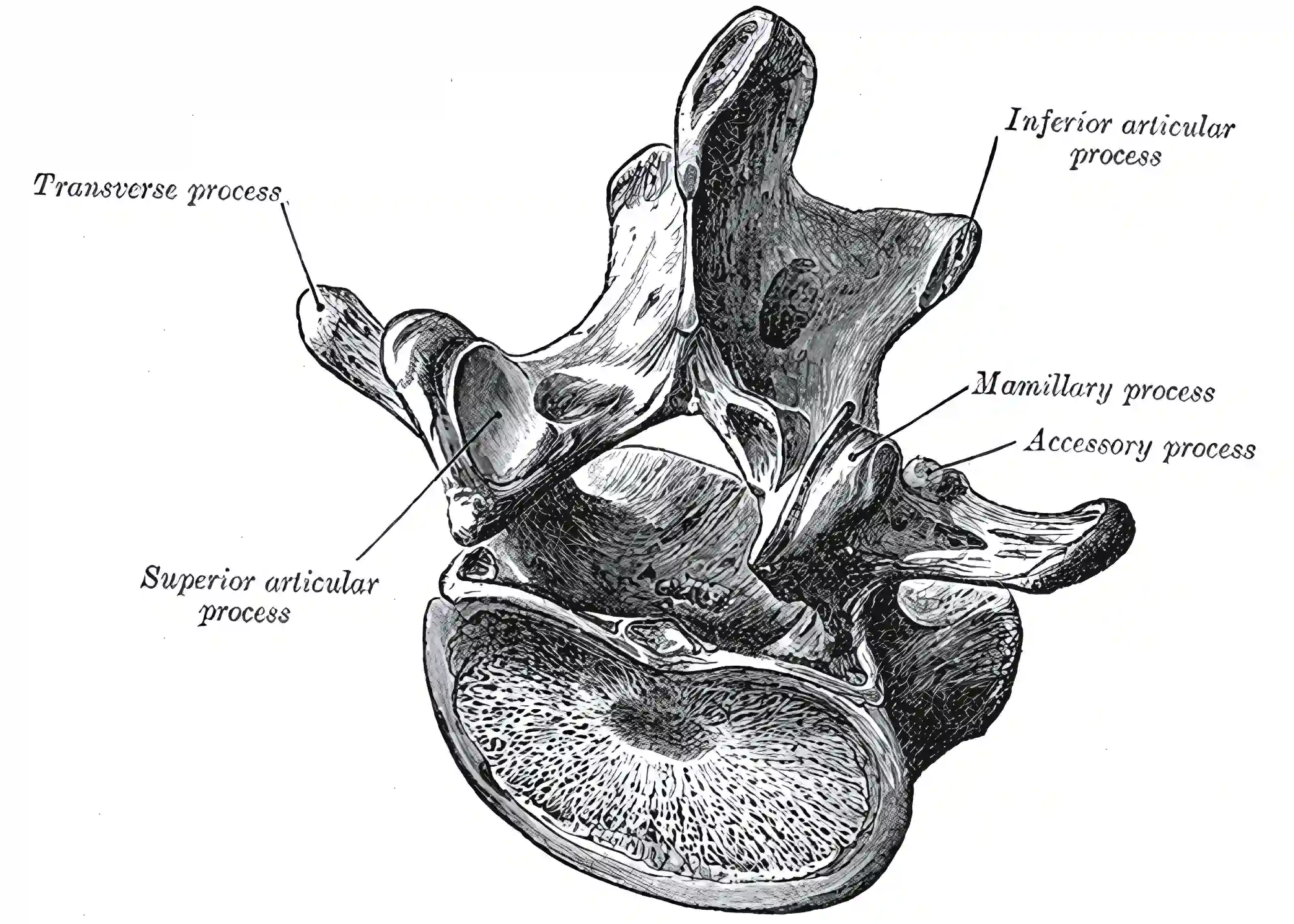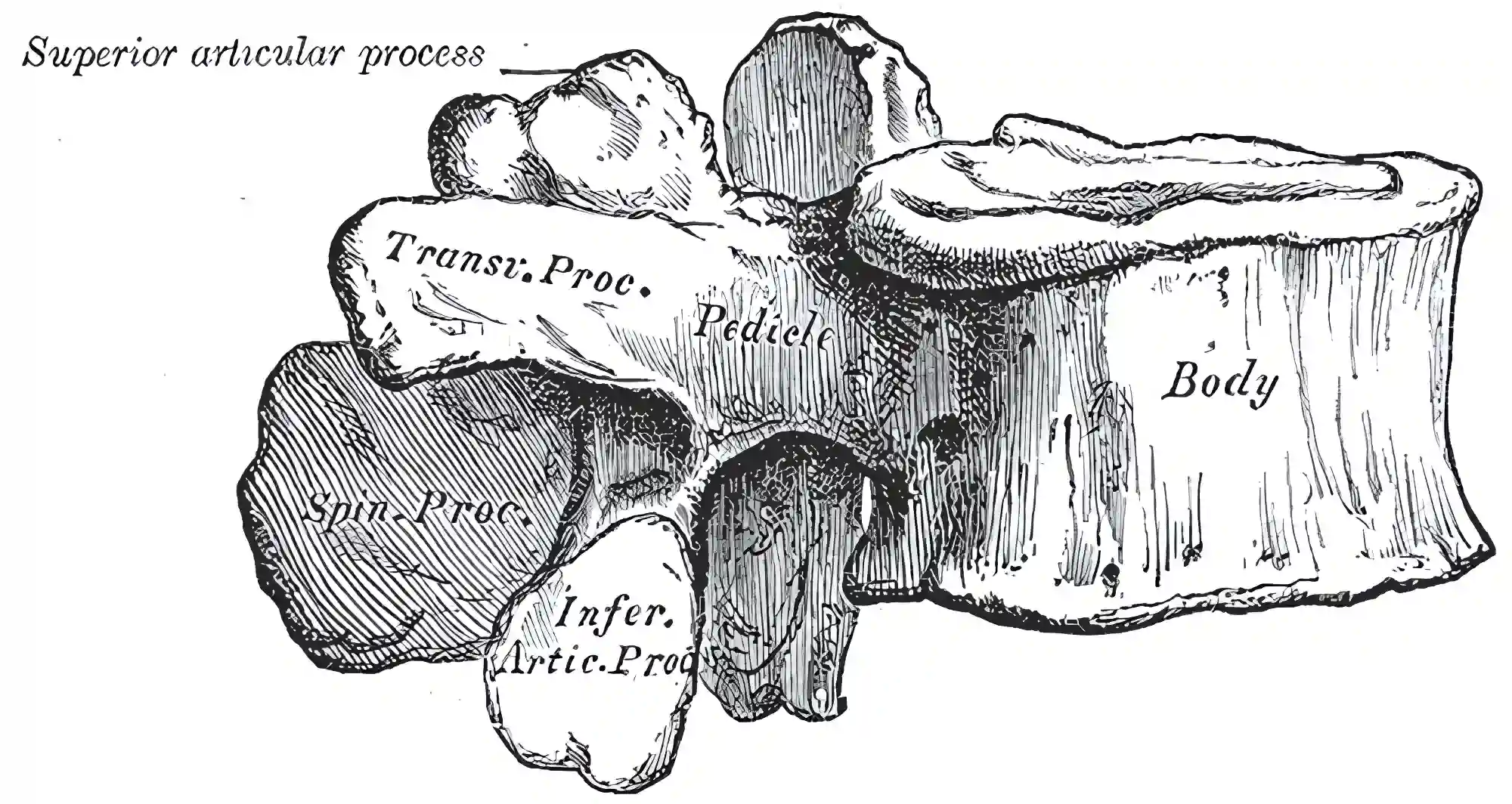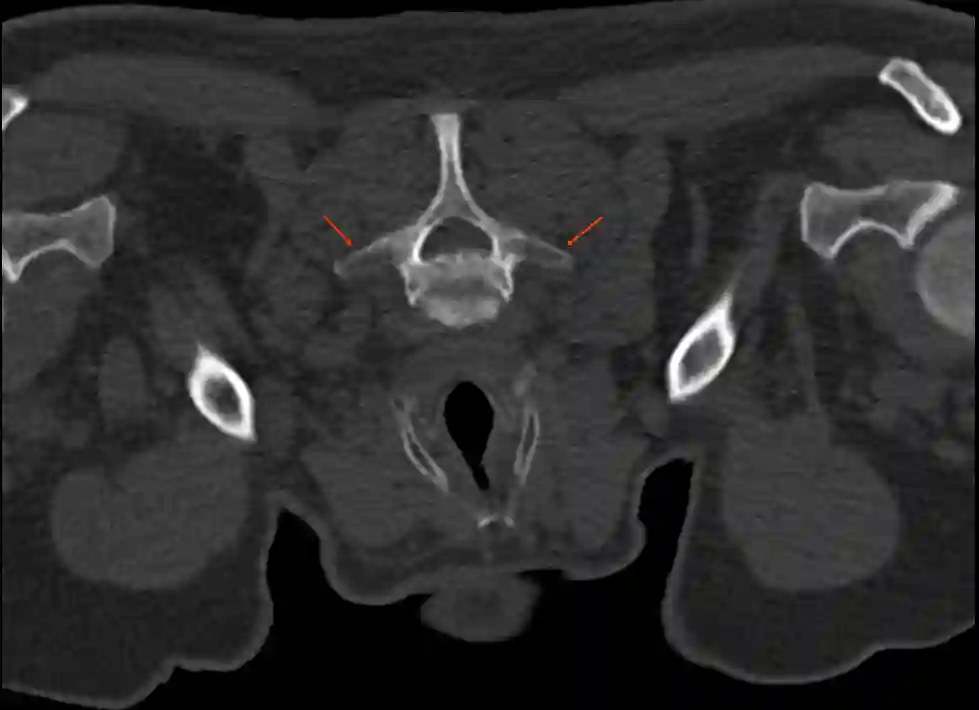Transverse process
Last edit by Alaric Steinmetz on
Synonyms: Querfortsatz
The paired transverse process is an essential component of the vertebral body. It serves as an attachment point for the intertransverse ligament and muscles of the autochthonous back muscles, which are significantly involved in the stabilization and mobility of the spine.
Cervical Spine
The cervical spine is characterized by a unique anatomical feature: The transverse processes of the cervical vertebrae contain the transverse foramen. These foramina together form the transverse canal, through which the vertebral artery passes.

Thoracic Spine
In the thoracic spine, the transverse processes form joint connections with the ribs. These joints are crucial for the structural integrity of the thorax and allow efficient breathing movement.
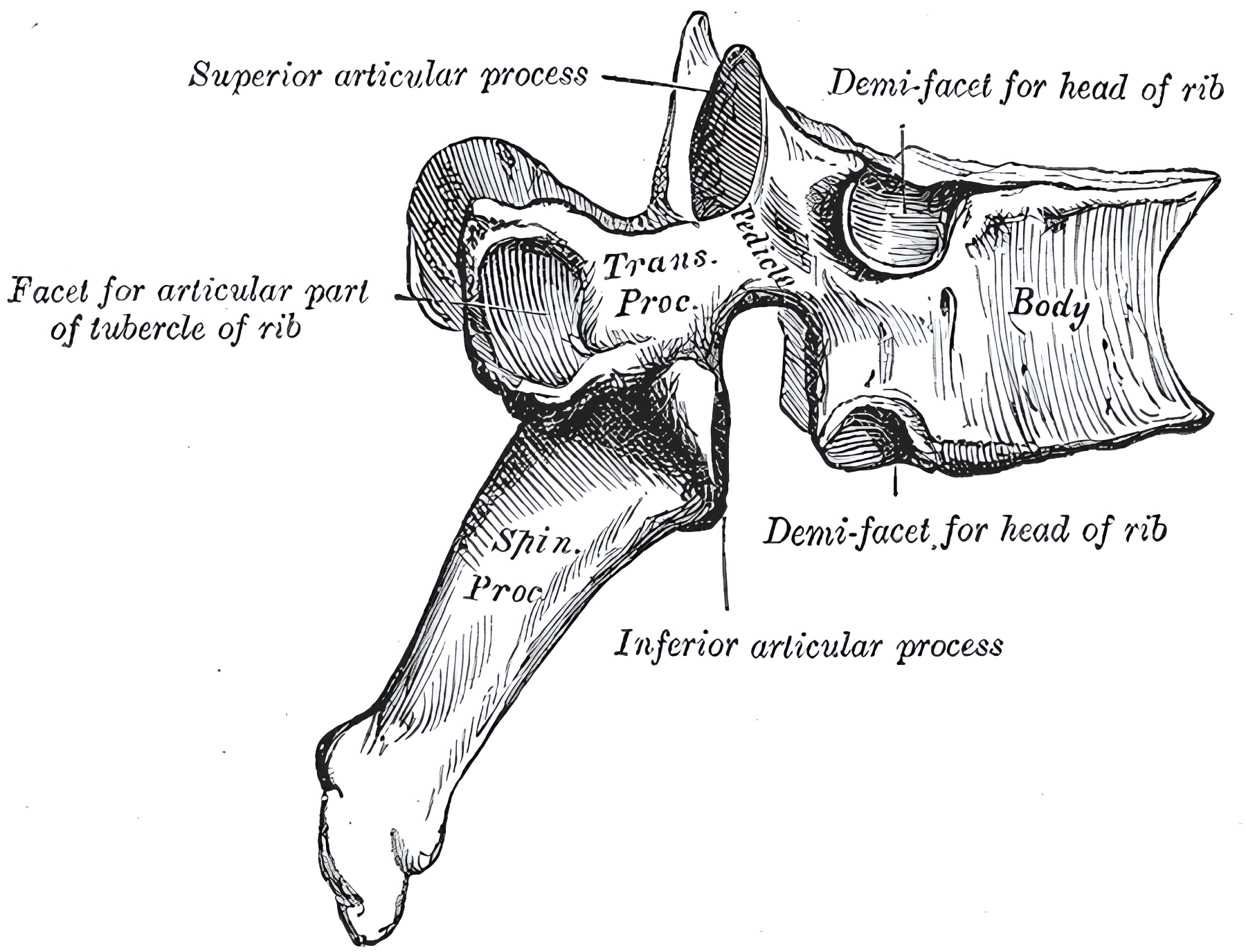
Lumbar Spine
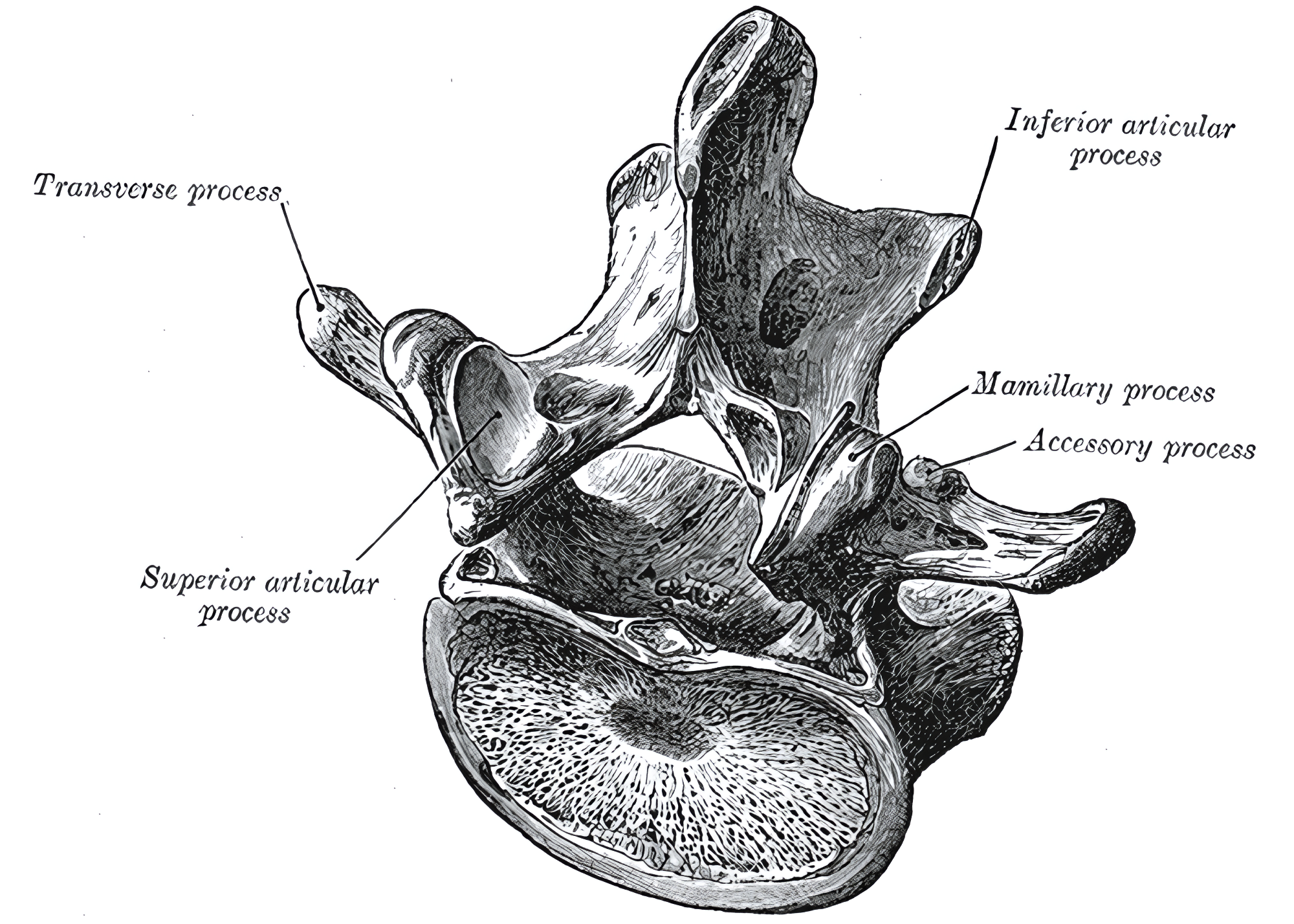
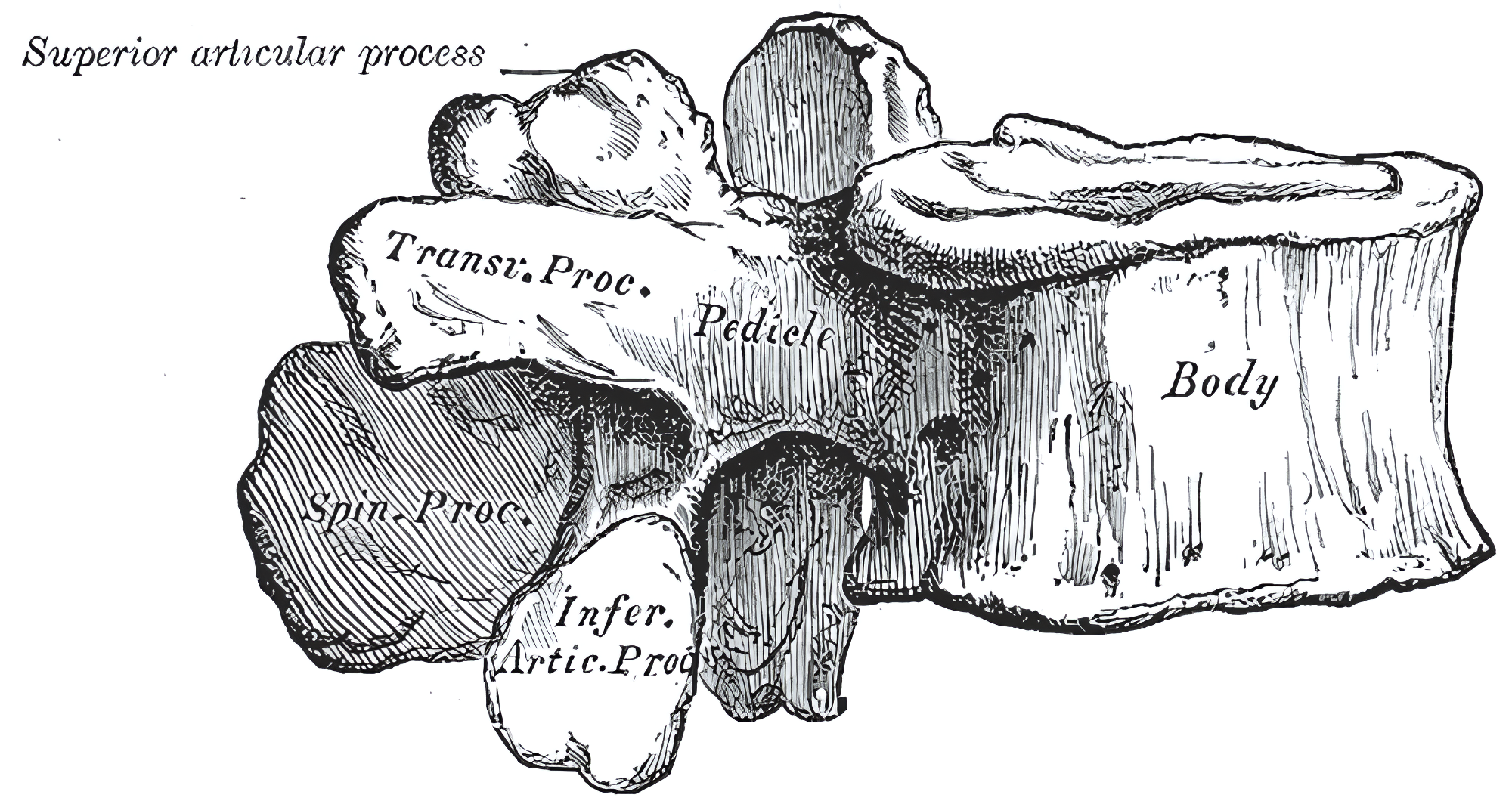
Imaging

Fractures
Fractures of the transverse process are classified according to the AO classification as an A0 fracture and generally do not require surgical intervention.
